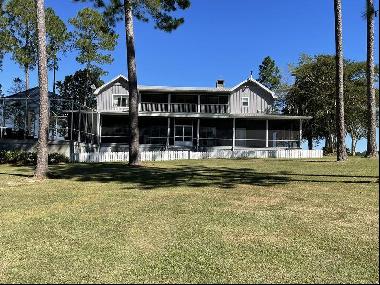
By Tom Whyman
Our desire for a fantasy home is, perhaps, a desire to feel encompassed, safely and completely. In this way, it aims at a return to the womb. There is something inherently nostalgic about trying to imagine one’s fantasy home. Maybe I don't know where I could be happy now. But perhaps there is somewhere I might have been happy once.
For me, for some reason, the words “fantasy home” trigger a thought of the image on the front cover of the 1999 album American Football by the Midwest emo band of the same name. The picture is a photograph of the gable end of a boarded, white suburban house, the lights on in the windows, against the green dusk sky.

For 15 years, until the release of their second record, this photograph was pretty much the only image fans of American Football’s music had to go on. The band formed while its members were students at the University of Illinois and were fronted by Mike Kinsella, who, as a teenager, had played in the seminal Chicago emo band, Cap’n Jazz. American Football mostly played together for fun, not even bothering to give their songs names until they had recorded them, and after they graduated, they split up, without any fanfare — leaving only this single, quietly perfect record behind. They eventually reformed in 2014 and recorded their second album in 2016.
The “American Football House” stands at 704 W High Street in Urbana, Illinois, within walking distance of the university’s campus. At the time, it was apparently home to some of the band’s friends. As the years went by and American Football’s cult grew, the house — which by 2016, according to an article in Vice magazine, had become quite dilapidated — became a place of pilgrimage for fans (actual residents started directing emo nerds to other places round the corner, telling them the “real” house was somewhere else, over there).
In a way, the American Football house could only be, well, American: it is very much an American, suburban home. It looks like it should have a big garden, and that whoever lives there drives an SUV. But it has also always reminded me of the house where I grew up in southern England, in 1980s-built Hampshire suburban sprawl — the window in the gable evoking, for me, the attic bedroom that I slept in as a teenager.

The American Football House is one of those album covers that fits the music perfectly. Made by students, in between adolescence and adult life, the music on American Football both trades in “teenage feelings” (as Kinsella sings at one point), and longs for them. This, in essence, is its magic. When I was growing up in my parents’ house, I felt sad a lot of the time — and angry, and frustrated. I always felt like real life was happening somewhere else, in “real” places, not like this, and that because of where I was from, I was never going to be quite able to attain it. But to feel those teenage feelings is not only to feel sad in a way that you don’t have to any more: it is also to realise that you used to feel that there were possibilities everywhere, which you can no longer see.
To me, fantasy homes don’t really exist. Even if you lived somewhere that completely matched your aesthetic or practical ideals, it would still get messy. You would still need to do the laundry. Bits of it would break. You’d need to rearrange bits of it as your family grew, or your circumstances changed. And oh God, is that damp there? There is an inherent tragedy to life — there you go.
But when I listen to American Football and when I look at the house on the cover, I feel like I did when I arrived at university, or when I met my first girlfriend, or left the country for the first time on what was not a family holiday. I don’t feel like I am living in a perfect world. But I can see a world where I believed that something perfect might be possible, again.
Photography: Chris Strong; American Football and Polyvinyl Record Co; Tim Bailey





















